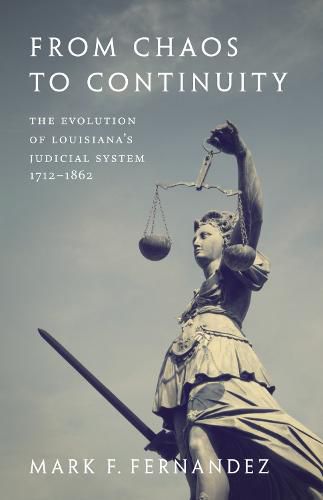Readings Newsletter
Become a Readings Member to make your shopping experience even easier.
Sign in or sign up for free!
You’re not far away from qualifying for FREE standard shipping within Australia
You’ve qualified for FREE standard shipping within Australia
The cart is loading…






This title is printed to order. This book may have been self-published. If so, we cannot guarantee the quality of the content. In the main most books will have gone through the editing process however some may not. We therefore suggest that you be aware of this before ordering this book. If in doubt check either the author or publisher’s details as we are unable to accept any returns unless they are faulty. Please contact us if you have any questions.
Historians have long viewed Louisiana as an anomaly in the American judicial system-an eccentric appendage at the mouth of the Mississippi River. The diverse Creole culture and civilian heritage of the state’s legal system have led many scholars to conclude that it is an anachronism in American law unworthy of serious attention. Others embrace this tradition and revel in the minutiae of the Pelican State’s unique civil law legacy. In From Chaos to Continuity, Mark F. Fernandez challenges both perspectives. Using the innovative methods of the New Louisiana Legal History, he offers the first comprehensive analysis of the role of the courts in the development of Louisiana’s legal system and convincingly argues that the state is actually a representative model of American law and justice.
Tracing the rise of Louisiana’s system from its earliest colonial origins to its closure during Federal occupation in 1862, Fernandez describes the introduction of common law after American takeover of the colony; the chaotic combination of French, Spanish, and Anglo legal traditions; the evolution of that jurisdiction; the role of the courts-especially the state supreme court-in maintaining the mixture; and the judge’s proper function in administering justice. According to Fernandez, the challenge of integrating two very different systems of law was not unique to Louisiana. Indeed, most antebellum southern states had legal systems that incorporated important traditional aspects of their colonial legal orders to varying degrees.
From Chaos to Continuity liberates Louisiana’s legal history from the quirky restraints of the past and allows scholars and students alike to see the state as an integral part of American legal history.
$9.00 standard shipping within Australia
FREE standard shipping within Australia for orders over $100.00
Express & International shipping calculated at checkout
This title is printed to order. This book may have been self-published. If so, we cannot guarantee the quality of the content. In the main most books will have gone through the editing process however some may not. We therefore suggest that you be aware of this before ordering this book. If in doubt check either the author or publisher’s details as we are unable to accept any returns unless they are faulty. Please contact us if you have any questions.
Historians have long viewed Louisiana as an anomaly in the American judicial system-an eccentric appendage at the mouth of the Mississippi River. The diverse Creole culture and civilian heritage of the state’s legal system have led many scholars to conclude that it is an anachronism in American law unworthy of serious attention. Others embrace this tradition and revel in the minutiae of the Pelican State’s unique civil law legacy. In From Chaos to Continuity, Mark F. Fernandez challenges both perspectives. Using the innovative methods of the New Louisiana Legal History, he offers the first comprehensive analysis of the role of the courts in the development of Louisiana’s legal system and convincingly argues that the state is actually a representative model of American law and justice.
Tracing the rise of Louisiana’s system from its earliest colonial origins to its closure during Federal occupation in 1862, Fernandez describes the introduction of common law after American takeover of the colony; the chaotic combination of French, Spanish, and Anglo legal traditions; the evolution of that jurisdiction; the role of the courts-especially the state supreme court-in maintaining the mixture; and the judge’s proper function in administering justice. According to Fernandez, the challenge of integrating two very different systems of law was not unique to Louisiana. Indeed, most antebellum southern states had legal systems that incorporated important traditional aspects of their colonial legal orders to varying degrees.
From Chaos to Continuity liberates Louisiana’s legal history from the quirky restraints of the past and allows scholars and students alike to see the state as an integral part of American legal history.